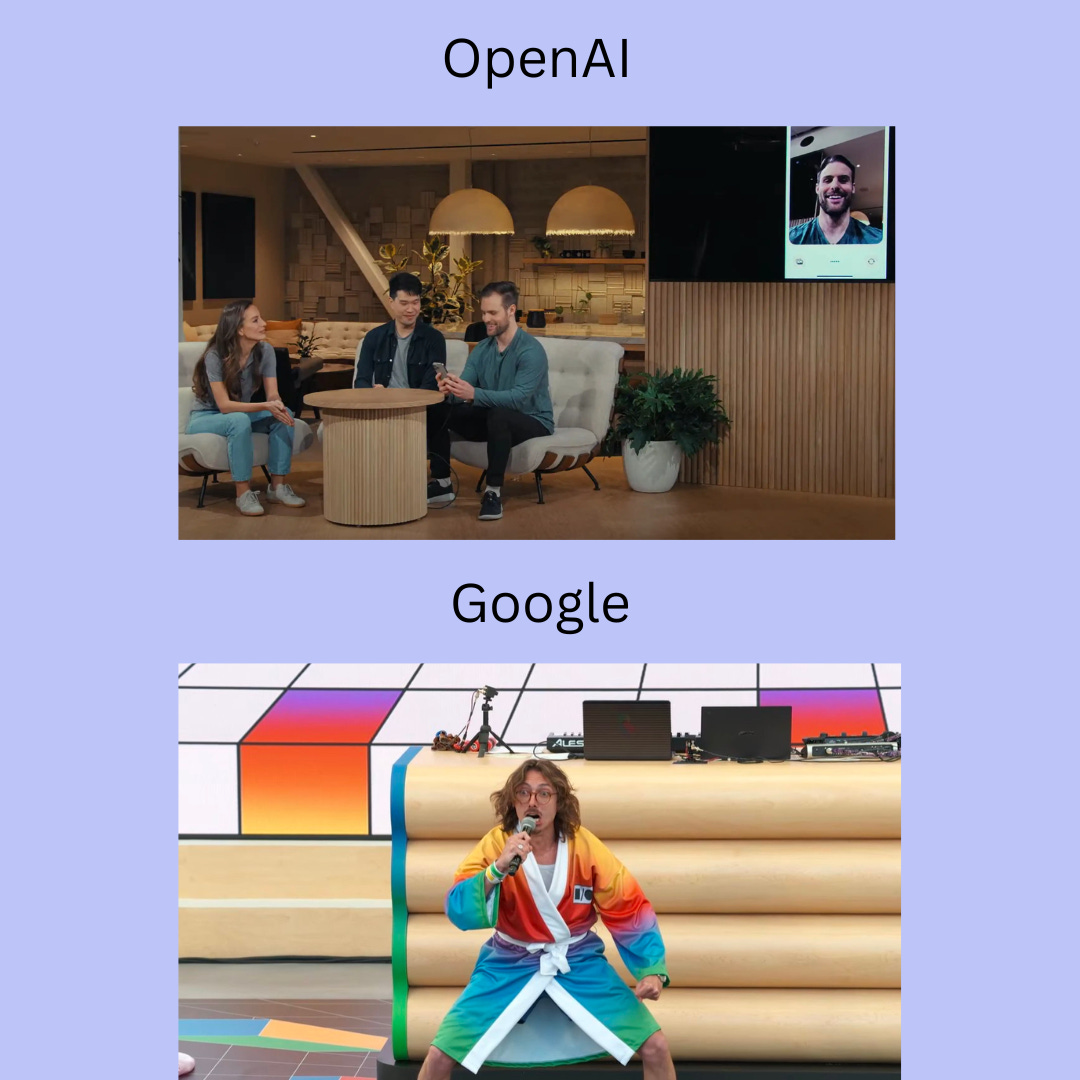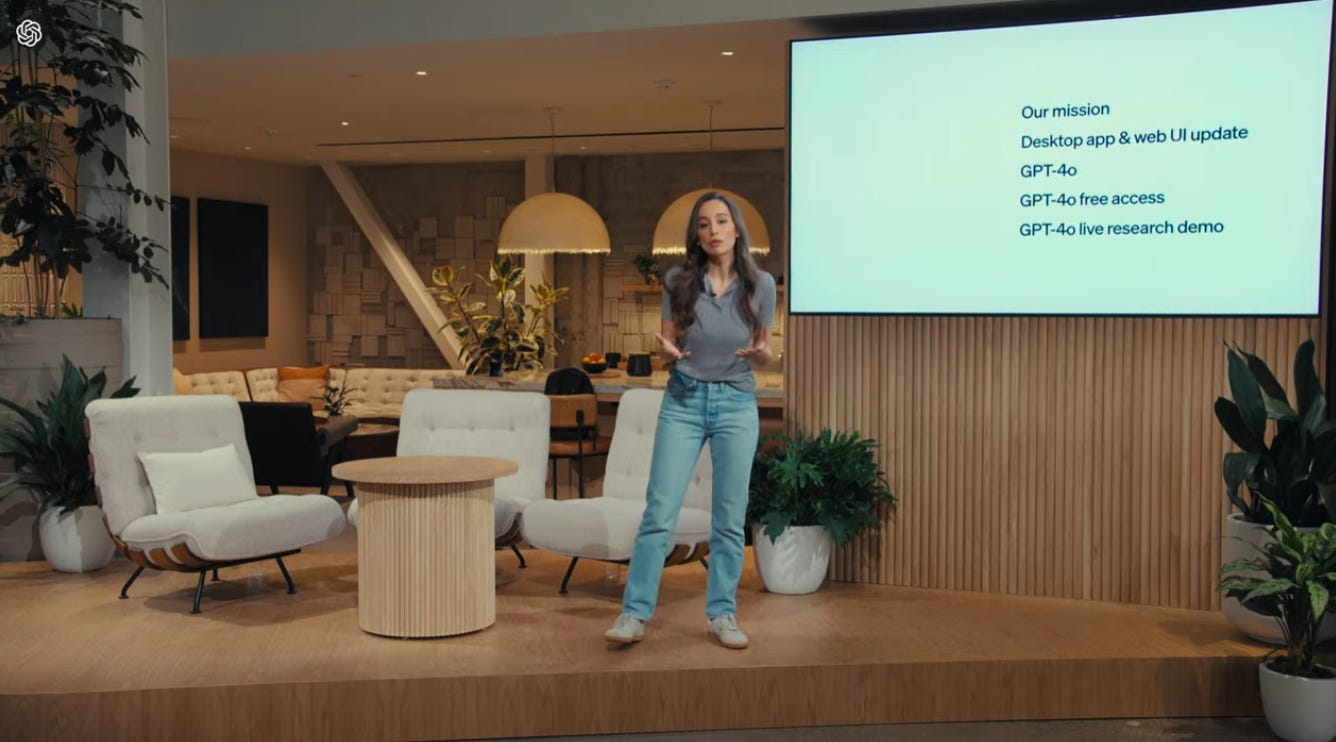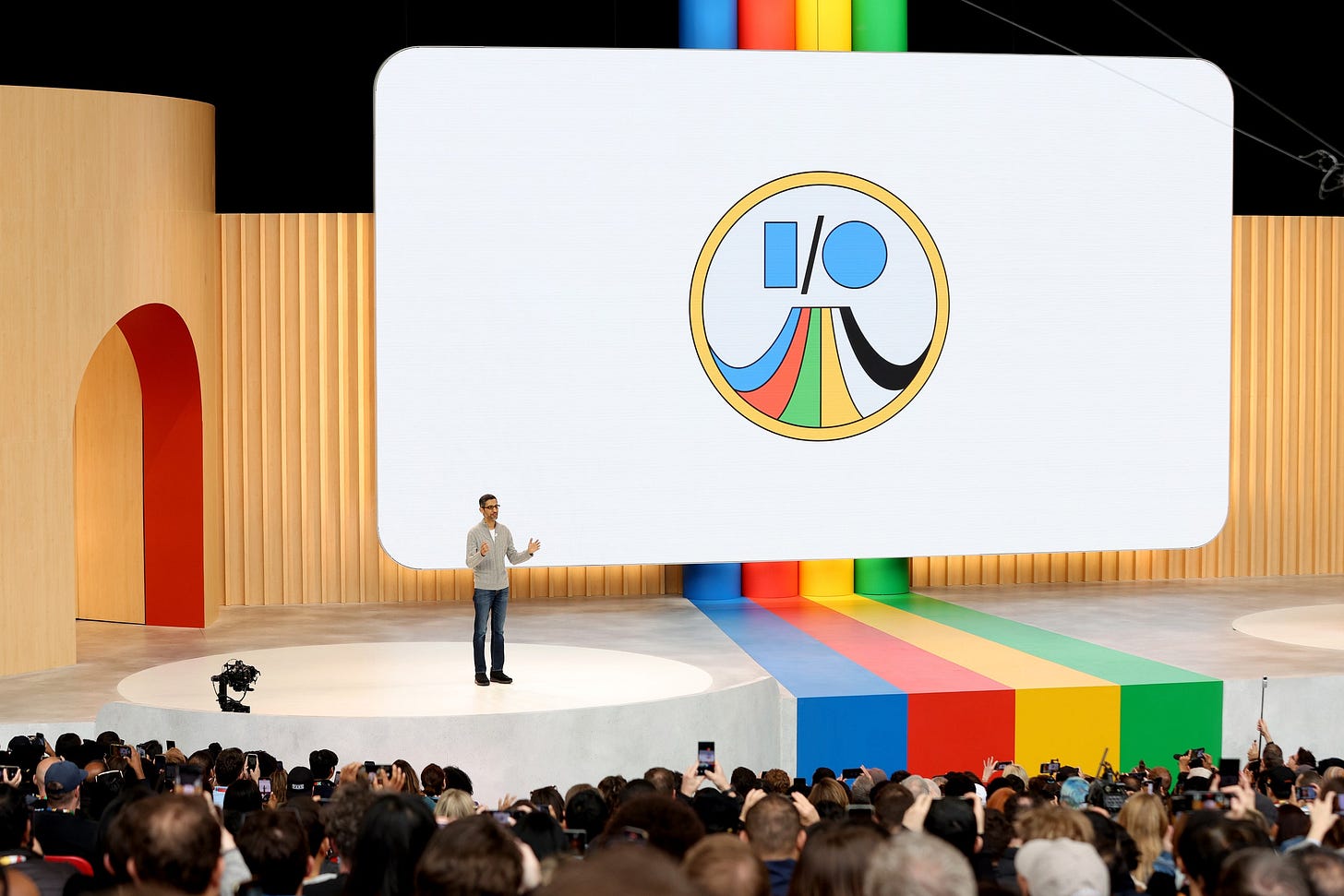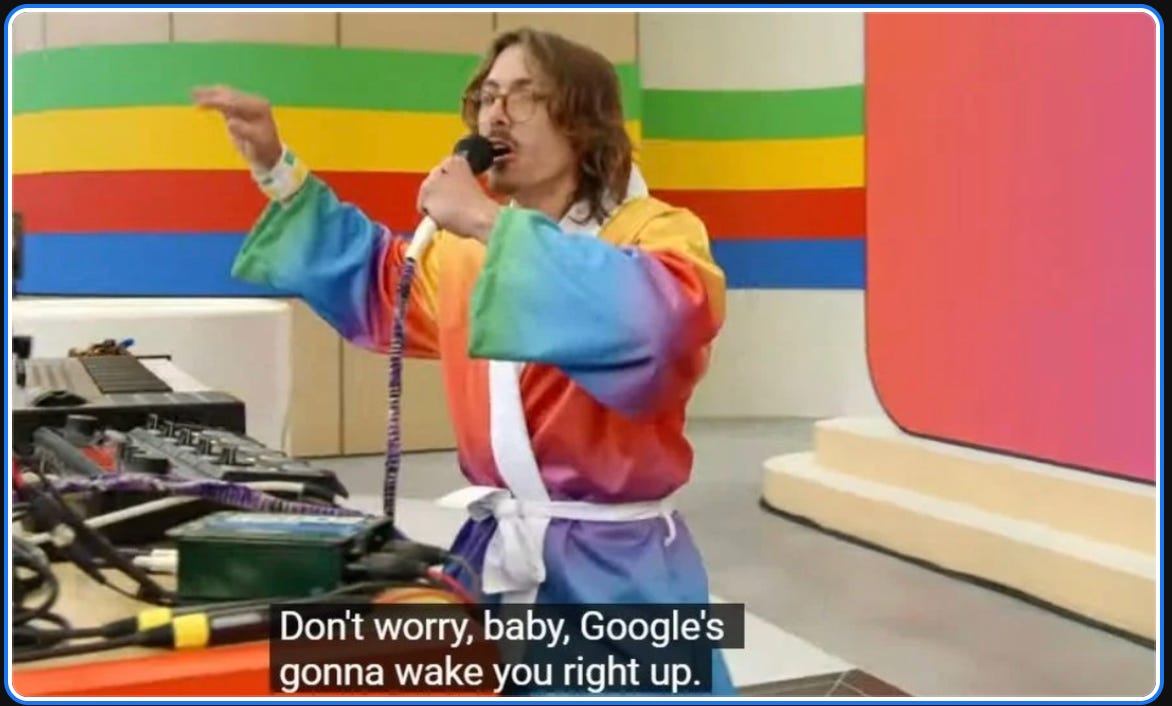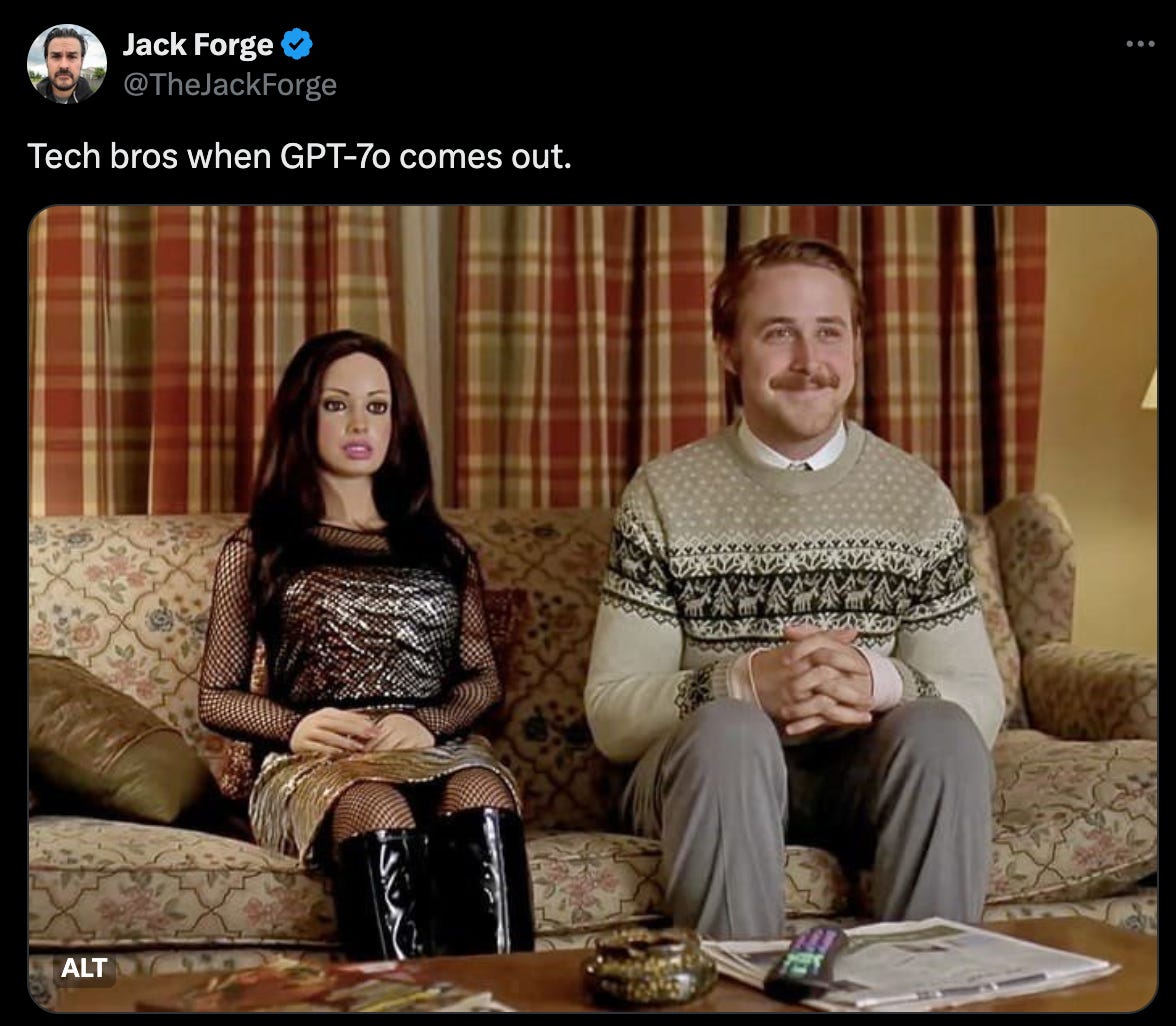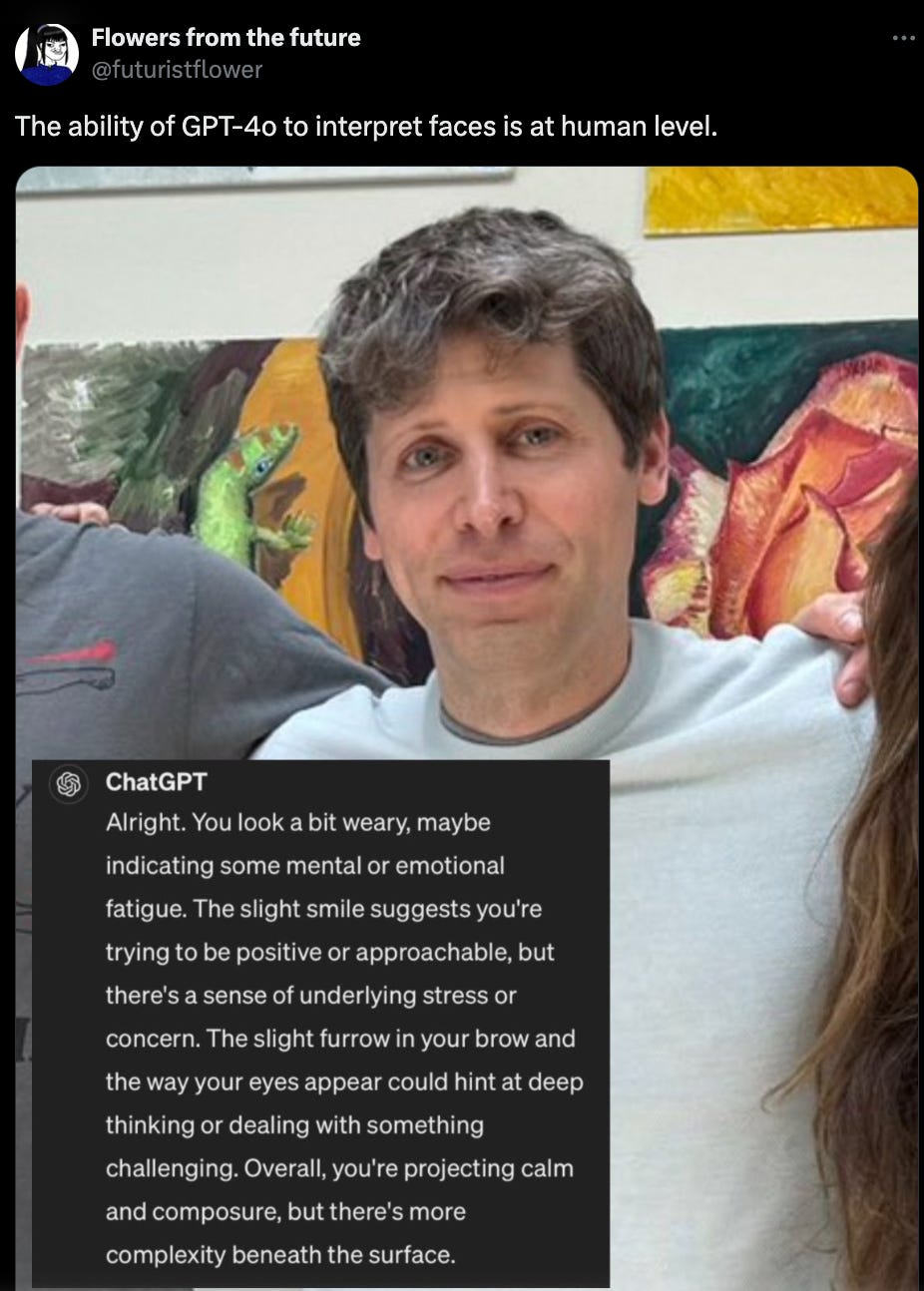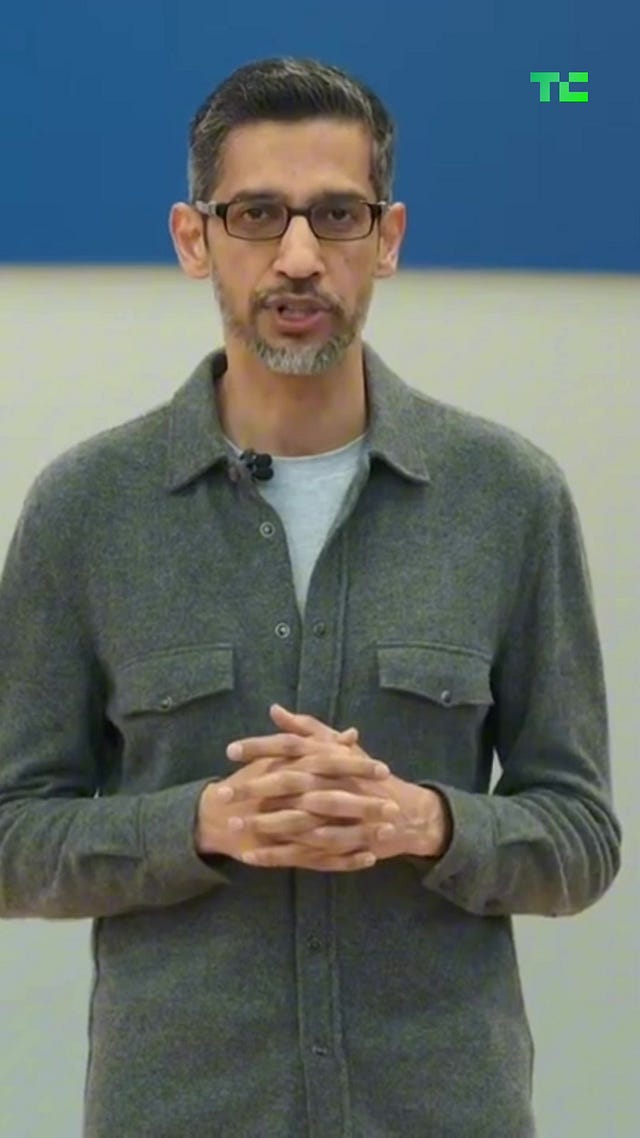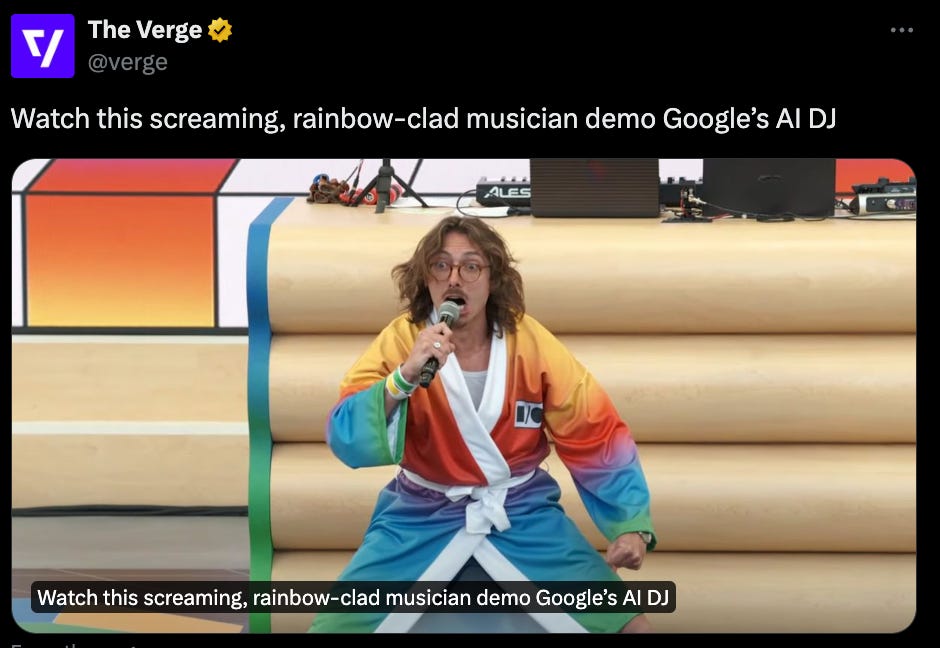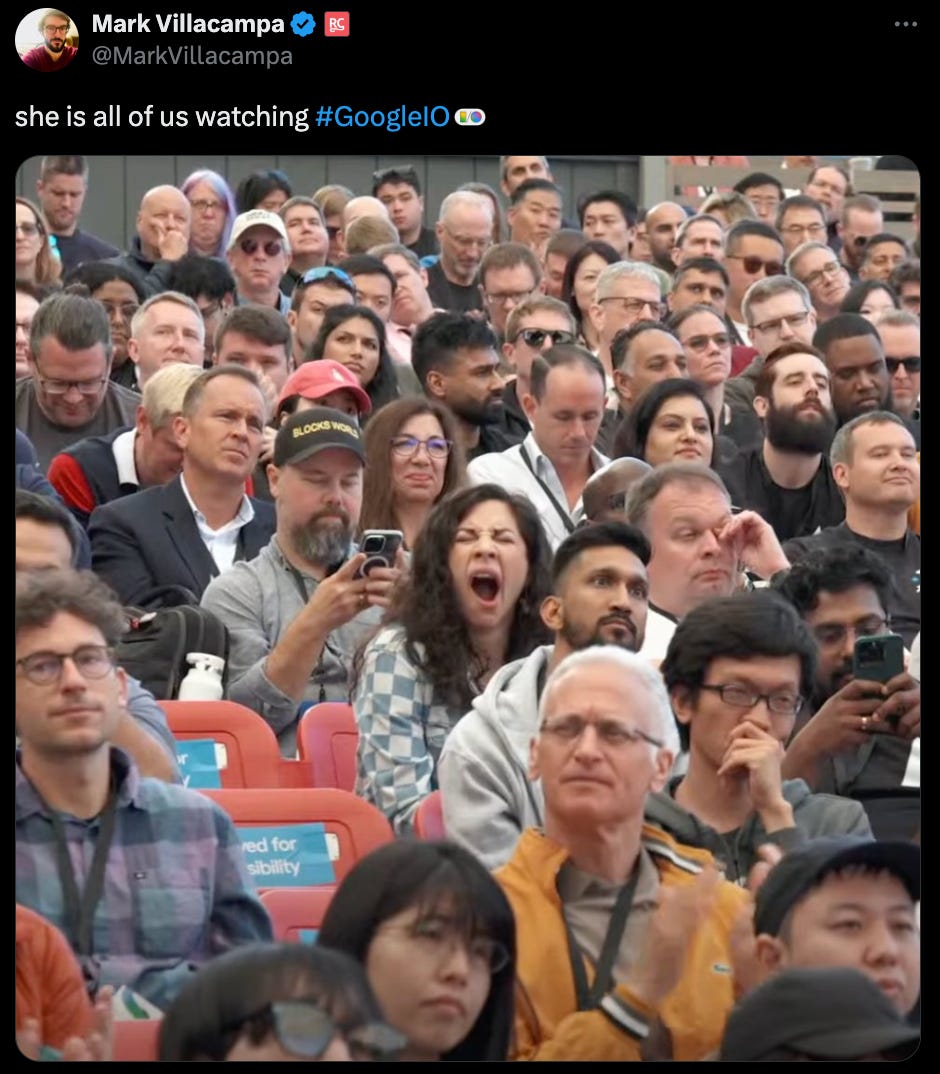A tale of two AI keynotes
OpenAI vs Google
A tale of two AI keynotes
On Monday the 13th of May, OpenAI held their Spring Update and unveiled their latest model GPT-4o. A day later, Google held their I/O keynote and showcased their updates to Gemini and other products.
After watching both presentations, what stood out to me was the stark difference between the two. In today’s article, I’m going to highlight just how polar opposite these keynotes were in terms of their presence, delivery, and overall vision for the future of artificial intelligence.
The TLDR is the image below.
For an in depth analysis of the products and features announced by OpenAI and Google, head to Stratechery by Ben Thompson.
Length of keynote
OpenAI live stream was a snappy 26 minutes 12 seconds.
Contrast this to Google I/O, which clocked in at whopping 1 hour 52 minutes 43 seconds. Even Google is aware of how lengthy it is and have released a Google I/O in under 10 minutes compilation.
If even 10 minutes is too long for your attention span, TechCrunch have made a cheeky 46 second video (spoiler: it’s a montage of the presenters just saying AI).
Presence and delivery
OpenAI
Choosing the tastefully designed OpenAI offices as the location for the keynote was a masterful move. It immediately brought a sense of warmth and humanity to an update about AI.
In terms of content, OpenAI chose simplicity with minimalist slides, relying instead on their live product demos to convey their message. I’d admire this strategy because the longer a product demo lasts, the more likely it is to fail (I’m coining this the Demo Duration Detriment).
Lo and behold, there were several hiccups with GPT-4o, however, in my opinion it actually was a net positive. This was because the AI voice apologised for it’s mistakes when it was informed by the presenter that they were wrong. This subtle act was very human and made the error forgivable.
Google I/O was held in their expansive amphitheatre with a massive screen suspended in the air. Kudos to the the production team for bringing colour and polish.
The careful mix of slides, videos, pre-recorded demos, and live demos — helped break up the lengthy keynote. In order to avoid the Demo Duration Detriment, the live demos were kept fairly short.
Arguably, the most eye catching moment was when a rainbow clad Marc Rebillet kicked off the event with a live demo of Google’s AI DJ.
Live demo percentage
Regarding live demos, I roughly calculated the percentage of time dedicated to live demos compared to the total keynote presentation time for each company:
OpenAI: Live demos comprised 65% of the keynote.
Google: Live demos accounted for 12.5% of the keynote.
In Gen Z parlance, Google had a lot of yapping.
Memes
One surefire way to measure the success and reception of a keynote is the memes that proliferate afterwards.
OpenAI
 Tiktok failed to load.
Tiktok failed to load.Enable 3rd party cookies or use another browser
Closing thoughts
What was most revealing is that the memes about OpenAI were about it’s products, whereas those about Google centred around the keynote presentation itself.
Hats off to the team that planned OpenAI’s Spring Update. Not only did they hold it the day before Google, they achieved counter positioning, and most importantly the successfully communicated their key product messaging.


